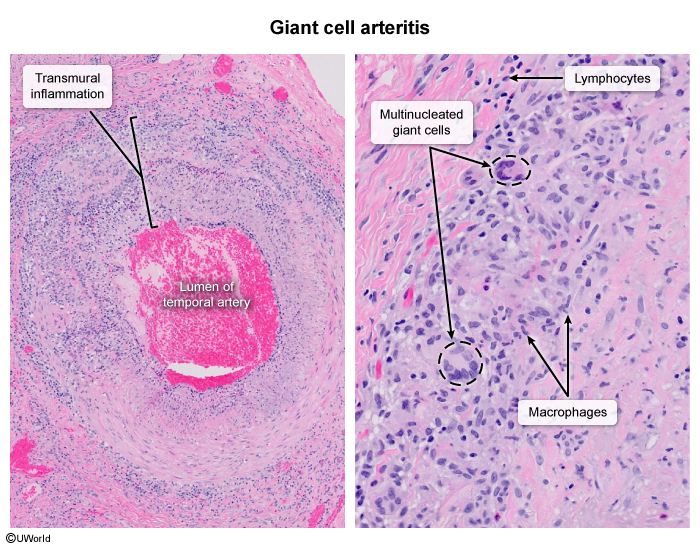Giant Cell (Temporal) Arteritis
Article Sections
Introduction
Giant cell arteritis (GCA), also known as temporal arteritis and Horton disease, is a common systemic vasculitis that occurs almost exclusively in patients age >50. It affects medium to large arteries, particularly those in the head and neck, such as the temporal artery (ie, temporal arteritis). GCA can cause significant morbidity if not promptly diagnosed and treated, potentially leading to vision loss and other serious complications. GCA is closely associated with polymyalgia rheumatica (PMR).
Pathophysiology and pathology
The exact pathophysiology of GCA is unclear. It is characterized by a T-cell–mediated inflammatory process of medium to large arteries, likely due to an unknown trigger that activates dendritic cells, activates T cells, and leads to macrophage-mediated amplification cascades. The inflammation may occur diffusely but predominantly affects the arteries of the head and neck, especially the temporal artery (ie, temporal arteritis). The inflammatory infiltrate in affected vessels is typically granulomatous and is composed of lymphocytes (predominantly CD4-positive T cells) and macrophages, which may fuse to form multinucleated giant cells (
Continue Learning with UWorld
Get the full Giant Cell (Temporal) Arteritis article plus rich visuals, real-world cases, and in-depth insights from medical experts, all available through the UWorld Medical Library.
Images
